Don’t worry if you didn’t catch Argentina’s opening match against England in the Rugby World Cup on 10 September. It was as poor a game as you could ever hope to miss.
England scraped through 13–9 in the end, but looked less like the world-class side they are and more like 15 blokes who had met for the first time at breakfast, learned the rules of the game over lunch and then had a quick chuck around after tea.
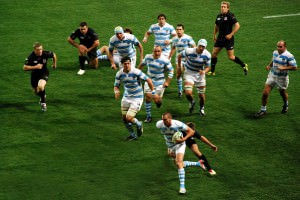
Argentina vs England at the 2011 Rugby World Cup – Photograph by Geoff Wilson
By contrast the Pumas, as the Argentinian team are known – though sharp-eyed pedants will note that the native feline depicted on their jerseys is actually a jaguar – displayed the all-for-one and one-for-all togetherness that has long been their trademark. What they lacked was luck (losing their captain and fly-half Felipe Contempomi to injury in the 26th minute was a grievous blow) and that extra bit of flair and oomph needed at this level to penetrate well-drilled defensive lines.
Even a malfunctioning England is a tougher proposition than Romania, however, and as expected the Pumas cruised past the eastern Europeans on Saturday 17 September, scoring six tries en route to a 43–8 win. Matches against Georgia and (the crunch fixture) Scotland await, and if the Pumas win both, they’re in the quarter-finals. And as anyone who has even a passing acquaintance with sporting clichés will tell you, anything can happen in the knockout stages…
Four years ago, something did happen. Argentina entered the 2007 World Cup as unfancied outsiders and went on to shock everyone – though probably not themselves – by finishing third. To achieve what was comfortably their greatest ever achievement on the world stage the Pumas had to beat host nation France twice: first in the tournament’s curtain raiser and then again in the third-place play-off.
No one was more surprised by the Pumas’ success in 2007 than the Argentinian general public, and a nation whose love-affair with the round ball has been noted ad nauseum had a brief but passionate fling with the oval one. Players like Agustín Pichot (then captain, now retired), the aforementioned Contepomi, pin-up fly-half Juan Martín Hernández (Argentina’s star player, sadly ruled out of this World Cup due to injury), and the-not-very-pretty-but-you-wouldn’t-say-it-to-his-face Marío Ledesma became household names. (Or at least, thanks to an unholy rush by advertisers to cash in on the team’s success, household faces.)

Mario Ledesma – Photograph by Pierre-Oliver Carles
It wasn’t always like this. Argentinian rugby has a long but not especially glorious history. Like football, the sport was introduced to the country by British immigrants and expat workers in the late 19th century. The first rugby match played in Argentina was in 1873, and the sport’s national governing body, the Unión Argentina de Rugby, was formed in 1899.
The Argentinian national team made their debut in 1910, playing at home against a combined British XV. They lost 28–3. The British Lions toured again in 1927 and 1936, playing 19 matches in total and winning all of them by comfortable margins. Perhaps sensing a pattern, the Pumas picked a friendlier opponent for their first away tour: Chile, whom they beat 29–0 in Valparaiso in 1936.
Local skirmishes aside, the Pumas remained the whipping boys of world rugby until the 1960s. Then the pushovers began to push back. A successful tour of South Africa in 1965 – the first time the team had crossed the Atlantic – was followed in 1968 by a first home series win, against the then-mighty Wales.
As a team, the Pumas had arrived. What they lacked was a world-class player; a George Best or Diego Maradona-type figure who could change the course of a game with a flash of genius and inspire local kids to pick up the ball instead of kicking it.
Enter Hugo Porta – the best player to ever pull on the sky-blue and white jersey, and widely regarded as among the top 10 rugby players of all time. Making his debut in 1971, this legendary fly-half led the Pumas to a number of famous results (most notably the 21–21 draw against the New Zealand All Blacks in 1985, in which Porta scored all of Argentina’s points) before retiring in 1987.
Clearly, then, the Pumas’ success over the past decade is no flash in the pan but the culmination of more than a century of blood, sweat, toil and cauliflowered ears. The problem now is how to meet the heightened expectations of their own fans. Can Argentina consistently put out a XV capable of beating the likes of England, South Africa and New Zealand?
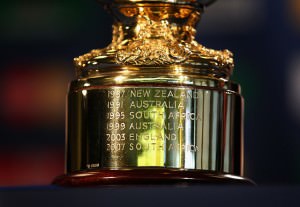
The Webb Ellis Rugby World Cup Trophy – Photograph by Audrey Pilato
Definitely… maybe. Two major challenges confront Argentinian rugby. The first is to escape from their traditional – and understandable – geographic isolation. Put simply, the Pumas don’t play enough matches against the other top nations. This will change from 2012 with the inauguration of an expanded Four Nations tournament featuring New Zealand, Australia, South Africa and Argentina.
The other challenge is social and demographic – and infinitely more thorny. Argentinian rugby faces the same problem that all minority sports do; namely, that it’s a sport played by a minority. Argentina (population 40m) can draw on a pool of 53,000 registered players; England (population 52m) has 686,000 players at its disposal. Even a prop forward can do the math.
To grow, Argentinian rugby must become both more pervasive and more inclusive. It needs to expand beyond its traditional heartlands, which are the affluent suburbs north of Buenos Aires (particularly San Isidro) and the northwestern province of Tucumán. And it needs to shed its image as a sport for the hyper-privileged and privately educated. Rugby will always be old-school, but it needn’t come with a tie and blazer.
That’s all for the future. In the meantime, let’s wallow in some nostalgia and admire the 10 most important tries in Argentinian rugby history:

Matt Chesterton

Latest posts by Matt Chesterton (see all)
- Top Chefs of New Argentine Cuisine - November 6, 2012
- Argentina at the London 2012 Olympics - June 12, 2012
- The Best Wine Tasting Venues and Events in Buenos Aires - February 16, 2012

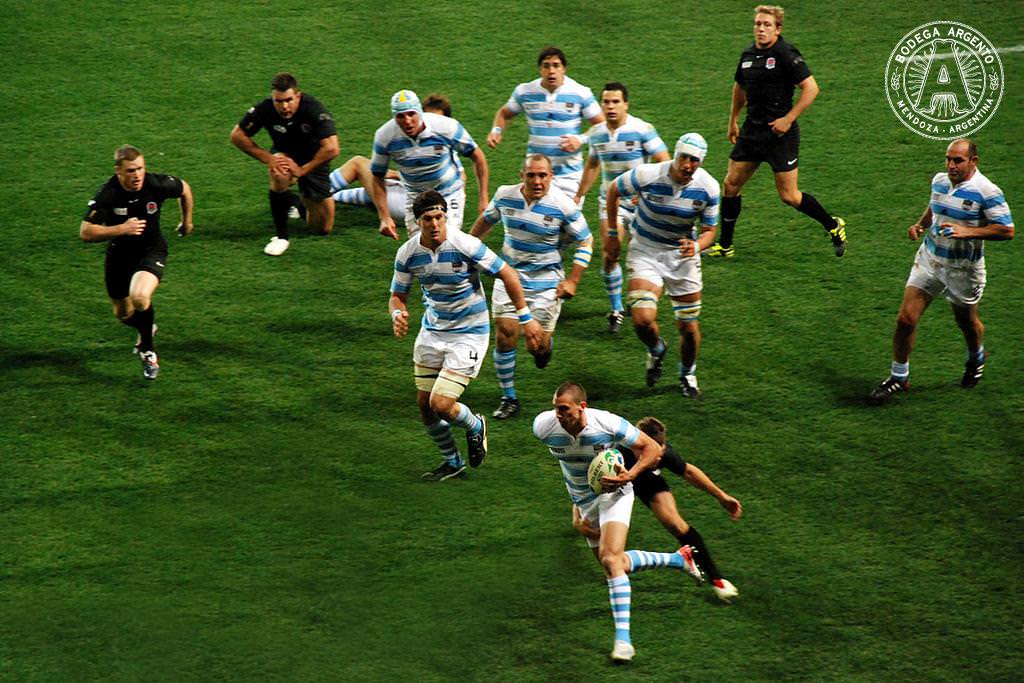
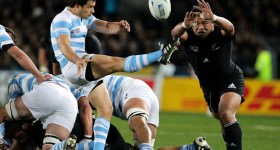 Argentina Joins The Rugby Championship as Tri-Nations Become Four
Argentina Joins The Rugby Championship as Tri-Nations Become Four  2010 World Cup Results: Argentina Loses 0-4 to Germany, Ending 2010 World Cup Football Bid
2010 World Cup Results: Argentina Loses 0-4 to Germany, Ending 2010 World Cup Football Bid  South America’s World Cup!
South America’s World Cup!  The Maradona Show – Argentina World Cup Football Preview
The Maradona Show – Argentina World Cup Football Preview  5 (Honest) Reasons Why Argentina Could Win the World Cup
5 (Honest) Reasons Why Argentina Could Win the World Cup  Messi and Maradona Lead Argentina to 4-1 Victory Over South Korea in World Cup Football
Messi and Maradona Lead Argentina to 4-1 Victory Over South Korea in World Cup Football  2010 World Cup Results: Argentina 3-1 Mexico
2010 World Cup Results: Argentina 3-1 Mexico  Argentina Hit Their Stride in World Cup 2014
Argentina Hit Their Stride in World Cup 2014  2010 World Cup Results: Argentina 1-0 Nigeria
2010 World Cup Results: Argentina 1-0 Nigeria  “The Polo Kid” – An Interview with Director Nathaniel McCullogh
“The Polo Kid” – An Interview with Director Nathaniel McCullogh 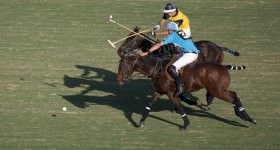 Polo – the Classic Sport of Argentine Gentlemen
Polo – the Classic Sport of Argentine Gentlemen  The State of Football in Argentina: 2011 Copa America and More…
The State of Football in Argentina: 2011 Copa America and More…
Oooooo I'll never forget the 2007 World Cup!
Did the Pumas get their nickname during that first tour of SA? I think one of my former rugby playing boyfriends (shhhhh!) told me 🙂
I'm looking forward to the Four Nations. ARG will be to the 4 Nations what Italy is to the 6 Nations for a while, don't you think? At least until they get more experience and finally the UAR decide to turn professional.
Anyway, I only watch rugby matches for the “lomazos” LOL! (And I comment on the players' good looks while my hubby listens patiently and tries to focus on the match)
Yes, that's right, it was during the first tour of South Africa. A South African journalist assumed the animal depicted on the jersey was a puma, and the nickname stuck.